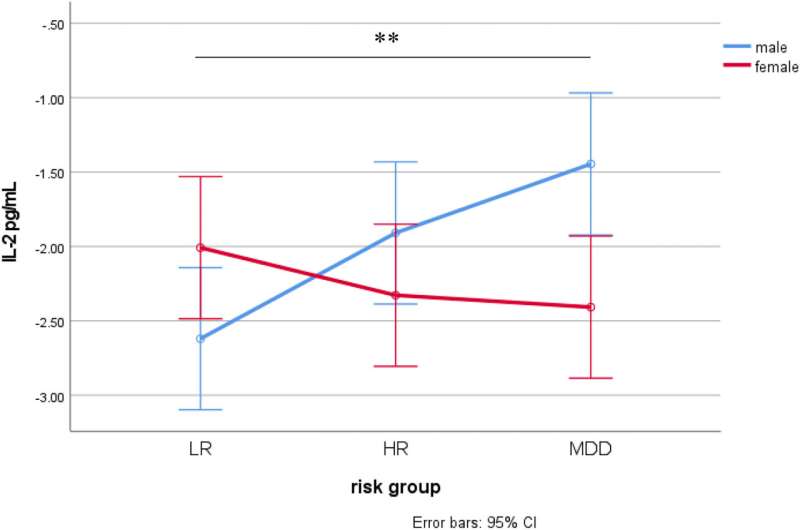This article has been reviewed according to Science X's editorial process and policies. Editors have highlighted the following attributes while ensuring the content's credibility:
fact-checked
peer-reviewed publication
trusted source
proofread
Inflammatory signs for adolescent depression found to differ between boys and girls

New research led by the Institute of Psychiatry, Psychology & Neuroscience (IoPPN) at King's College London has found that depression and the risk of depression are linked to different inflammatory proteins in boys and girls.
When inflammation occurs in the body a host of proteins are released into the blood called cytokines. Previous research has shown that higher levels of cytokines are associated with depression in adults, but little is known about this relationship in adolescence.
Researchers investigated sex-differences in the relationship between inflammatory proteins and depression. Published in the Journal of Affective Disorders, the study found that different cytokines were implicated in depression risk and severity in boys compared to girls.
To assess inflammation, researchers measured the blood cytokine levels in 75 adolescent boys and 75 adolescent girls (aged 14–16 years) from Brazil. The 150 participants had been recruited into three groups with equal numbers (50 participants in each group: 25 girls and 25 boys). The groups were those at low-risk for depression and not depressed, those at high risk of depression and not depressed, and those currently experiencing major depressive disorder (MDD).
The findings indicated that there are sex differences between the individual inflammatory proteins that are associated with depression in adolescents. Higher levels of the cytokine interleukin-2 (IL-2) were associated with both increased risk for depression and the severity of depressive symptoms in boys, but not in girls.
However, higher levels of IL-6 were associated with severity of depression in girls, but not boys. In boys the levels of IL-2 were higher in the high-risk than the low-risk group and even higher in the group diagnosed with depression, indicating that in boys IL-2 levels in the blood could help indicate the onset of future depression.
Dr. Zuzanna Zajkowska, postdoctoral researcher at King's IoPPN and first author of the study, said, "This is the first study to show differences between boys and girls in the patterns of inflammation that are linked to the risk and development of adolescent depression. We found that the severity of depressive symptoms was associated with increased levels of the cytokine interleukin-2 in boys, but interleukin-6 in girls.
"We know more adolescent girls develop depression than boys and that the disorder takes a different course depending on sex so we hope that our findings will enable us to better understand why there are these differences and ultimately help develop more targeted treatments for different biological sexes."
Researchers recruited adolescents from public schools in Brazil. Risk of depression was assessed by a composite risk score for depression based on 11 sociodemographic variables that had been developed as part of the IDEA project. Adolescents completed several questionnaires, self-reporting their emotional difficulties, relationships, experiences, and mood. They also completed a clinical assessment with a child and adolescent psychiatrist.
Senior author on the study Professor Valeria Mondelli, clinical professor of psychoneuroimmunology at King's IoPPN and theme-lead for Psychosis and Mood Disorders at the NIHR Maudsley BRC, said, "Our findings suggest that inflammation and biological sex may have combined contribution to the risk for depression.
"We know that adolescence is a key time when many mental disorders first develop and by identifying which inflammatory proteins are linked to depression and how this is different between boys and girls we hope that our findings can pave the way to understanding what happens at this critical time in life. Our research highlights the importance of considering the combined impact of biology, psychology, and social factors to understand the mechanisms underlying depression."
More information: Zuzanna Zajkowska et al, Sex-specific inflammatory markers of risk and presence of depression in adolescents, Journal of Affective Disorders (2023). DOI: 10.1016/j.jad.2023.07.055




















